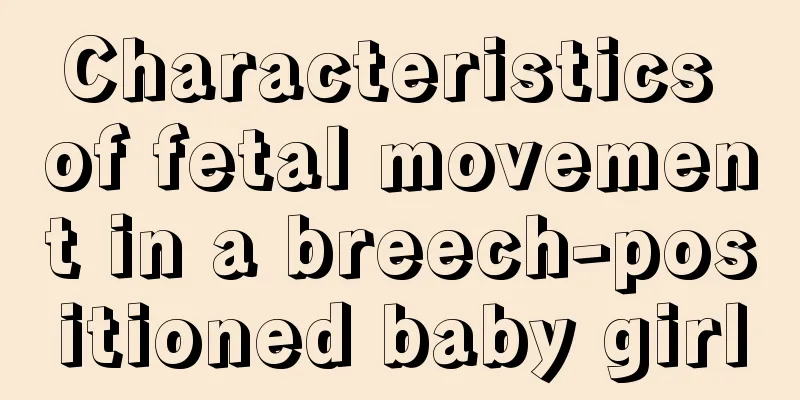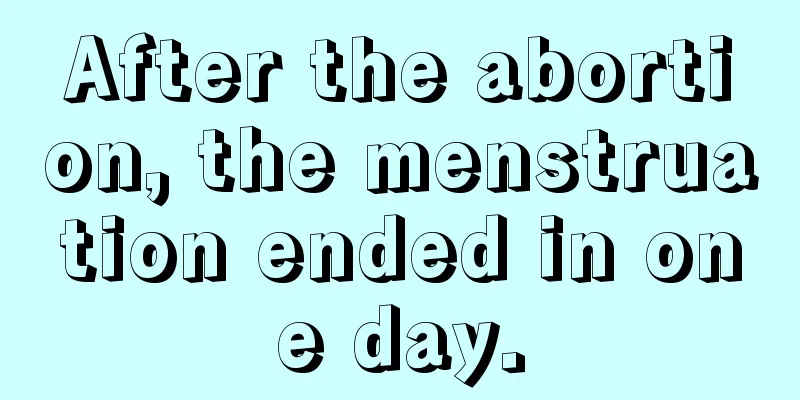Characteristics of fetal movement in a breech-positioned baby girl

|
There are many characteristics of fetal movement for a baby girl in breech position, and many expectant mothers may not be aware of them. However, we can judge the normal development of the fetus from the characteristics of fetal movement, so we recommend that mothers understand the main characteristics of fetal movement for a baby girl. The fetal movement of a baby girl is related to the baby's breech position and head position. Because the two have different shapes, the stimulation of the uterine wall will cause different fetal movements. Fetal movement feels different The difference between the head position and the breech position of the fetus: Fetal movement is the movement of the fetus in the uterine cavity that impacts the uterine wall. Because the shapes of fetuses in the head position and breech position are different in the expectant mother's uterus, the fetal movement felt by the expectant mother will also be different. Head position: The fetal movements are basically above the belly button, or on both sides. The lower abdomen basically does not move much, but you will feel something pressing against the bladder or anus. Breech position: Most fetal movements occur below the navel, and sometimes you can feel fetal movements near the pubic bone near the vulva because the fetus's feet are under the expectant mother's abdomen. Reminder: Although the fetal movements of fetuses in head position and breech position are different, they cannot be distinguished by fetal movements alone. You should go to the hospital for a prenatal check-up to determine the fetal position. 2. Different effects on childbirth The difference between fetal head position and breech position: The fetal position has no effect on the development of the fetus, but it does affect the delivery of the pregnant woman, and it determines whether the pregnant woman will have a normal delivery or a difficult delivery. Because for the fetus, the widest part of the body is the head, followed by the shoulders, and the narrowest part is the buttocks. The head position and buttocks position indicate whether the fetus comes out head first or buttocks first during delivery, which has different effects on the outcome of the pregnant woman's delivery. Head position: The head position of the fetus is a normal fetal position, and delivery in this position is generally smoother. Because during a head-present delivery, the fetal head is usually the first to pass through the birth canal. After the fetal head is delivered, the shoulders and buttocks can be delivered smoothly through the birth canal that has been expanded by the head. Moreover, once the fetal head is out of the birth canal, the secretions in the oral and nasal cavities are cleared and the newborn can breathe freely. It will not be a problem if the rest of the fetus is delivered slowly. Breech presentation: Breech presentation is an abnormal fetal position. If a normal birth is expected, the chance of dystocia will be relatively high, accounting for about 1/5 of the total number of dystocias during delivery. During a breech delivery, the smaller feet or limbs are delivered through the birth canal first, which does not fully dilate the cervix and vagina. The fetal head, which is the largest and has not adapted to the deformation of the birth canal, may have difficulty delivering. After the rest of the body has come out, the head may get stuck inside, which can easily cause suffocation, injury, or even death of the fetus. This article introduces in detail the differences in fetal movements between head presentation and breech presentation, as well as the effects of head presentation and breech presentation on delivery. As a pregnant woman in the late pregnancy, you must pay special attention to the fetal position. Only if the fetal position is relatively correct will it be more conducive to normal delivery. If the fetal position is not correct, it will have an adverse effect on the fetal position. |
>>: Can I have an abortion in three months of pregnancy?
Recommend
What is the appropriate fetal weight for normal delivery?
Women should choose whether to give birth natural...
Can I drink rice wine if I have breast hyperplasia?
Although women have less habit of drinking white ...
Can I use skin care products and facial masks when I am pregnant?
Pregnant women who love beauty may still want to ...
What should I do if I keep itching down there?
Itching down there is a common phenomenon, especi...
What will happen if I have a medical abortion?
Now there is a technology that can be performed w...
Parents, please take note! If you have these types of medicines at home, please dispose of them as soon as possible and do not give them to your children!
On November 15, the State Food and Drug Administr...
I have a boil in my private part
In fact, both men and women should pay attention ...
Six major hazards of wearing a bra to sleep
In daily life, many women have the habit of weari...
[Medical Q&A] Can different brands of rabies vaccines be used interchangeably?
Planner: Chinese Medical Association Reviewer: Hu...
More than 20 days after abortion
If a couple becomes pregnant without being ready ...
How to get rid of acne scars
If adolescence is beautiful, then acne can be sai...
Why is chess called Xiangqi? Who is the first Chinese female chess grandmaster?
Chinese chess is an entertaining art form. It is ...
What are the causes of high testosterone in women?
Many female friends do not have a deep understand...
Postpartum uterine prolapse
There are many reasons for uterine prolapse, amon...
If a bug gets into your eye, do you catch it or let it run away on its own?
I believe everyone will have this situation. It&#...









